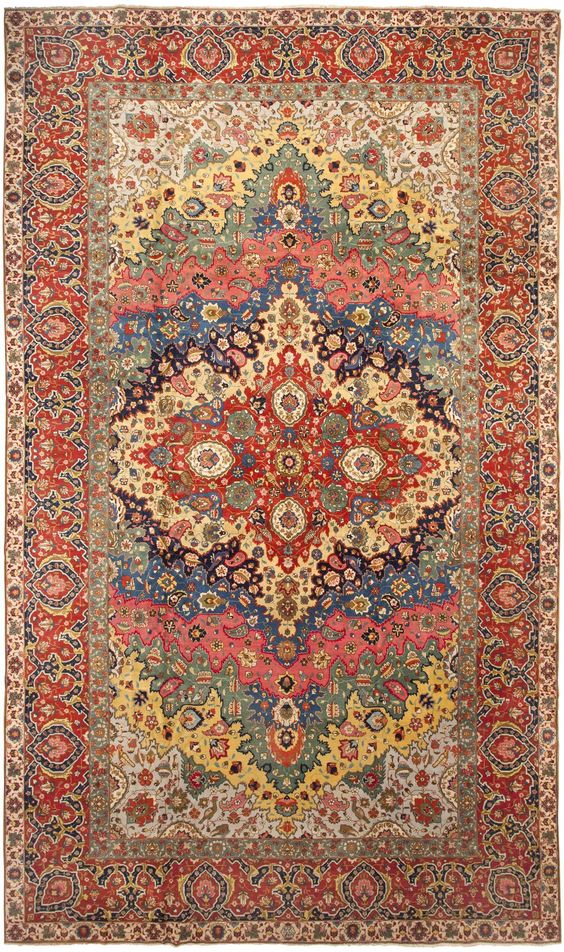Uncategorized
Tabriz carpets
Because of the history of the city of Tabriz, it is possible to trace the origins of carpets in this city back to before the Safavid Empire. This Era was the most enlightening in Iran; the Safavid kings were the ones most interested in art and craftsmanship. During this era, the carpet went from being a simple rural item to a luxury item, thanks to the economic boom of that period, many international merchants regarded carpets as icons of the Persian Empire. Tabriz carpets were regarded as art pieces for museums and collectors. These carpets are known to have been in great demand at that time.
Tabriz has a wide variety of patterns, from those with the medallion and Herati/Mahi to those with depictions and even 3-D carpets. Many artists and knotters have recently begun to produce fine Tabriz carpets with silk weft. The patterns of these carpets are usually those with medallions, and the variation starts from 24 raj (numbers of knots per 7 cm) up to 110 raj. There are different varieties of carpets from this area. The best known ones are the Tabriz, Heris, Lachak-turanj, Afshan, Dord Fasil, Sardorud.
The variety of carpets, smooth and thick surface, with simple and complex compositions were made in Tabriz. Traditional patterns can be recognized by the ornamental patterns in the background, red and blue colors. The typical ones witho the ” Lachak turanj” the turanj in the center of the carpet symbolizes the moon, and the pattern formed by lozenges with pointed leaves on the edges symbolize the scales of fish, which rise to the surface of the water at midnight to admire the moon’s reflection.
Heris carpets are those in the Heris area in northeast Tabriz. The composition of these carpets is based on the “Lachak-turanj” which is formed by curved leaf-like and curved linear patterns. These motifs have changed over time, however, and now the Heris have their own designs. It is important to mention that the designs of the Heris are based on the memory of the knotter without any design.
“Dord fasil” or “Four Seasons” are carpets based on ancient elements of decorative art, traditional symbolism dating back to spiritual conceptions of the agricultural era and religious scenes. Each part of this rug represents a season and lifestyle during. For example, the images of autumn can be harvesting, plowing and planting. Images of winter can be the farmers sweeping snow off roofs and whipping loaded donkeys headed to the village. Spring is depicted in vivid colors with scenes of trees in bloom and shepherds with flocks of sheep, while summer scenes the harvest and women and children in swaddling clothes carried into the field. Despite the difference between the scenes, the color scheme of the carpets depicts the rhythm of the design.



